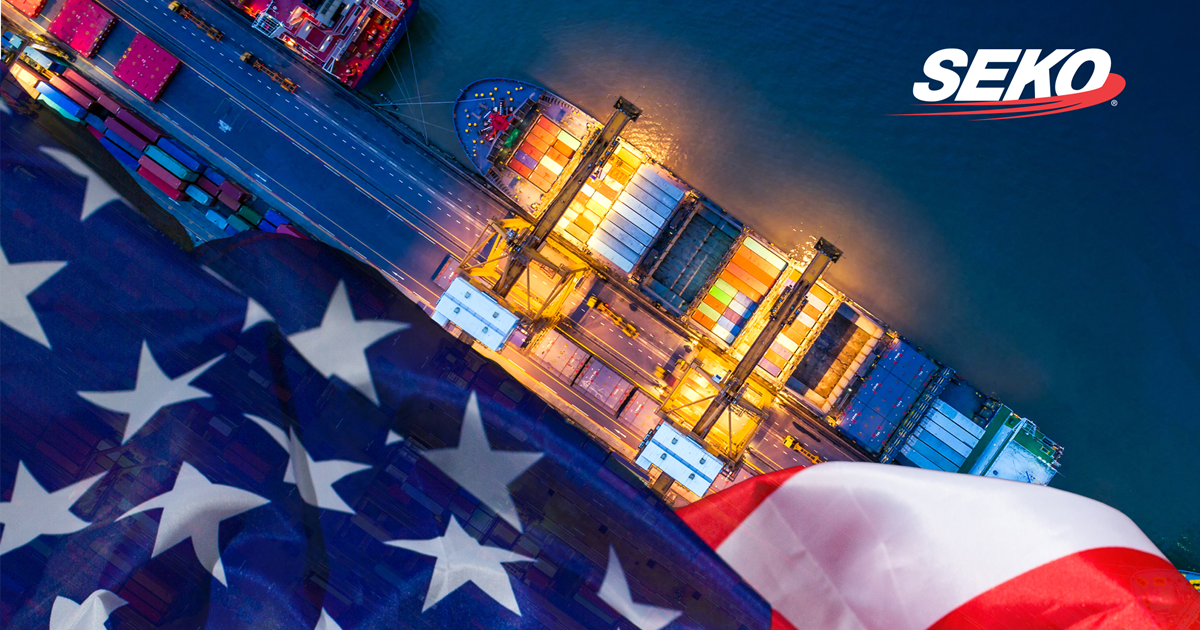What does the 2024 US presidential election mean for supply chain players?

In response to mounting industry concerns about unprecedented market volatility, SEKO Logistics continues to demonstrate its thought leadership through comprehensive market analysis. In an exclusive interview with leading industry publication The Loadstar, SEKO's Global Chief Commercial Officer, Brian Bourke, provided critical insights into the complex challenges facing global supply chains.
Read the full article <Election fever and port labour tension keep supply chain players on edge, says SEKO Logistics>
Critical Market Analysis: Multiple Challenges Converge
"The near-term supply chain market would be dictated by three “milestones".” Bourke explained to The Loadstar, highlighting critical factors:
- The presidential transition impact and a general increase in protectionist measures;
- East Coast port labor negotiations reaching a critical phase;
- Red Sea crisis affecting global shipping routes;
Immediate Market Response and Rate Dynamics
Drawing on SEKO's extensive market intelligence, Bourke notes a surge in strategic planning among shippers: "In the next week or two, we expect to see businesses making ‘a few safety purchase orders’, particularly as we approach potential policy shifts."
Key Market Impacts and Strategic Considerations
Tariff Concerns and Market Response
SEKO expert indicates several critical developments:
- Potential implementation of new tariff structures (10-20% across board, 60%-100% for specific origins and products)
- Impact on Trans-Pacific trade lanes
- Shifts in nearshoring strategies
- Implications for warehouse networks
Strategic Timeline Considerations
Based on SEKO's expert analysis, here are the key dates to watch:
- January 15, 2025 - East Coast Port Labour Agreement Deadline
- January 20, 2025 - Inauguration Day
- Q2/Q3 2025 - Potential new tariff implementation period
SEKO's Expert Guidance for Chinese Exporters
Immediate Action Points
- Strategic Inventory Management
- Pre-emptive shipping considerations
- Warehouse network optimization
- Alternative routing options
- Risk Mitigation Strategies
- Multiple origin strategies
- Contract negotiation timing
- Route diversification planning
Market Outlook and Rate Predictions
Short-term Market Dynamics
"Once the businesses feel certain that whoever takes the White House intends to up the number of tariffs, you’ll see inventory orders being pulled forward.” Bourke revealed to The Loadstar, “Some of our customers are already pulling orders ahead,"
Several key factors have also been noted:
- Extended peak season on Trans-Pacific routes
- Strong Asia-US cargo movement momentum
- Capacity adjustments by carriers
- Rate stabilization efforts
Long-term Strategic Planning
SEKO expert suggests preparing for:
- Potential trade policy shifts
- Supply chain restructuring
- Alternative manufacturing locations
- Network optimization needs
Alternative Routing Solutions
Drawing on SEKO's extensive network expertise, we offer comprehensive routing alternatives to address current challenges:
Trans-Pacific Options - West Coast Routing:
- Alternative port pairs beyond LA/Long Beach
- Strategic advantages for time-sensitive cargo
- Intermodal solutions via Pacific Northwest
- Enhanced warehouse network integration
Alternative Gateway Solutions - Gulf Coast Strategy:
- Houston and Mobile port utilization
- Reduced congestion potential
- Strategic inland point intermodal (IPI) options
- Cost-effective distribution to central U.S.
Canadian Gateway Solutions - Vancouver/Prince Rupert Options:
- Alternative access to U.S. Midwest
- Rail connectivity advantages
- Weather-resistant supply chain planning
- Custom clearance optimization
Looking Ahead: Strategic Planning for 2025
The logistics landscape in 2025 presents a complex interplay of factors that demand sophisticated planning and agile response capabilities. The transition period following the presidential inauguration in January 2025 will likely trigger significant policy shifts, particularly in trade relationships with China and other key manufacturing nations.
SEKO's market intelligence suggests that the first quarter of 2025 will be particularly critical as multiple factors converge: the implementation of new shipping alliances, potential labor negotiations at East Coast ports, and the possibility of new tariff announcements. Our analysis indicates that the shipping industry may experience substantial rate volatility during this period, especially on Trans-Pacific routes.
The realignment of shipping alliances, particularly with the introduction of the new Gemini Alliance, will reshape vessel deployment patterns and potentially impact service reliability through mid-2025. This transition period requires careful planning for optimal cargo routing and timing.
Furthermore, the potential implementation of new trade policies could fundamentally alter supply chain economics, particularly for goods manufactured in China and Southeast Asia. Companies must prepare for various scenarios, including possible tariff ranges from 10% to 60%, which could dramatically impact landed cost calculations and inventory holding strategies.
WHAT’S NEXT
The most important thing is for companies to prepare for each possible outcome. As your logistics partner, we are ready and able to pivot quickly. Our team is working directly with clients to address their specific needs as situation evolves.
We will frequently communicate and advise on the situation as more details become available.
If you have any questions, please reach out to your SEKO representative, or email us at lianxi@sekologistics.com.
直接发送洞见至您的收件箱

直接发送洞见至您的收件箱
